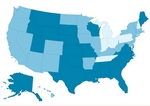business
Many care tasks are unpaid: Studies confirm what physicians know
■ Phone calls, e-mails and prescription requests were among the tasks tallied. The findings: Reassigning administrative duties could cut doctors' workload, as could standardized insurance forms.
By Victoria Stagg Elliott — Posted May 21, 2010
- WITH THIS STORY:
- » Related content
Two studies quantified the amount of uncompensated patient work physicians do during the course of practice.
A study in the April 29 New England Journal of Medicine analyzed data from the electronic medical records of Greenhouse Internists, a five-physician practice in Philadelphia, to get an idea of how much patient care is unpaid.
Each physician saw a daily average of 18.1 patients during visits that were usually paid for in some way. But each physician also made 23.7 phone calls, refilled 12.1 prescriptions and wrote 16.8 e-mail messages -- all unpaid services. Other forms of unpaid patient care included reviewing 19.5 laboratory reports, looking at 11.1 imaging reports and reading 13.9 consultation reports daily.
In response to these findings, Greenhouse hired a registered nurse to carry out "information triage" to determine when a physician needs to be involved. These unpaid tasks also are figuring into the practice's internal productivity measures that are used to calculate a physician's wages.
"The practice doesn't get any money out of phone calls and e-mails, but we recognize that when you do this, you are doing important patient care work. When insurance companies set payment rates for primary care physicians, they need to be more thoughtful about the work we are actually doing," said Richard J. Baron, MD, the study's author and Greenhouse's CEO (link).
Another study examined how complex insurance billing procedures can be streamlined to lessen the frustration factor associated with another administrative task, filing insurance claims.
The paper, published online April 29 in Health Affairs, suggested that establishing a single, transparent system for making claims with multiple insurers could save U.S. physician offices $7 billion a year. A single-claim system also would save four hours of an individual physician's time each week, along with five hours of support staff time (link).
"This is a major policy issue, and it doesn't require going to a single payer to make a pretty substantial fix to this," said Gregg Meyer, MD, one of the paper's authors, and senior vice president for quality and safety at Massachusetts General Hospital and Massachusetts General Physicians Organization in Boston.
Medical societies, including the American Medical Association, have long had policies and programs advocating administrative simplification. For example, the AMA has its "Heal the Claims Process" campaign, which focuses on reducing the cost of claims submission (link).
The industry group America's Health Insurance Plans also has several pilot projects that it says attempt to address this issue.












